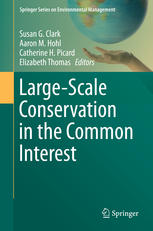

Most ebook files are in PDF format, so you can easily read them using various software such as Foxit Reader or directly on the Google Chrome browser.
Some ebook files are released by publishers in other formats such as .awz, .mobi, .epub, .fb2, etc. You may need to install specific software to read these formats on mobile/PC, such as Calibre.
Please read the tutorial at this link: https://ebookbell.com/faq
We offer FREE conversion to the popular formats you request; however, this may take some time. Therefore, right after payment, please email us, and we will try to provide the service as quickly as possible.
For some exceptional file formats or broken links (if any), please refrain from opening any disputes. Instead, email us first, and we will try to assist within a maximum of 6 hours.
EbookBell Team

4.0
26 reviewsMany people working toward sustainability recognize the important role of conservation but are inadequately prepared to deal with the large spatial, temporal and complexity scales that are involved in large-scale conservation efforts. Problems in large-scale conservation require navigating an intermixture of geophysical, biological and political dimensions. Coming to grips with these many natural and human forces and factors at large scales, much less the myriad details in any single case, is challenging in the extreme and becomes more critical with each day that passes. Large-scale conservation poses many complex challenges that single disciplines, approaches or methods cannot fully address alone. Interdisciplinarity can significantly strengthen large-scale conservation efforts. Throughout Large-Scale Conservation in the Common Interest the editors and authors argue that a more holistic and genuinely interdisciplinary approach is required to solve the complex and growing challenges associated with large-scale conservation. The chapters within offer such an approach and define key terms, bring challenges to light and employ case studies to offer concrete practical and strategic recommendations to help those who are engaged in the interactive tasks of promoting sustainability and human dignity. This book is intended for a broad audience, including students and professors new to the field of large-scale conservation, experienced field-based practitioners in science and management and decision and policy makers who set specific and strategic direction for large landscapes. Professors can use this book to introduce students to the challenges of successful large-scale conservation design and implementation and to teach interdisciplinarity as a framework, concept and tool. Professionals will find this book offers a new way of using science, management and policy to make decisions. Finally, this volume can be used as a guide to set up workshops, seminars, or projects involving diverse people and perspectives.